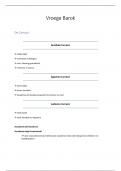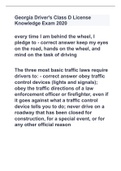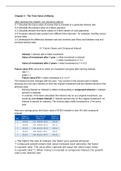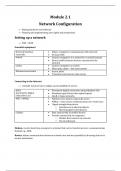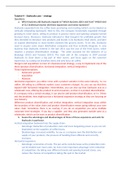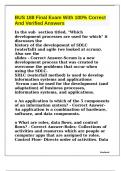Chapter 1. Introduction
Scope of the Book
The field of international HRM has been characterized by three broad approaches:
1. Cross-cultural management: examining human behaviour within organizations from an
international perspective
2. IHRM in the multinational context: seeks to describe, compare and analyse HRM systems in
various countries
3. Comparative HR and IR systems: focus on aspects of HRM in multinational firms
Multinational enterprise (MNE): a firm which owns or controls business activities in more than one
foreign country.
Defining International HRM
HRM refers to those activities undertaken by an organization to effectively utilize its human resources:
1. Human resource planning
2. Staffing (recruitment, selection, placement)
3. Performance management
4. Training and development
5. Compensation (remuneration) and benefits
6. Industrial relations
Morgan defines IHRM as the interplay among the three dimensions of human resource activities, countries
of operation and type of employees:
1. The broad human resource activities of procurement, allocation and utilization
2. The national or country categories involved in international HRM activities
o The host-country where a subsidiary may be located
o The parent-country where the firm is headquartered
o ‘Other’ countries that may be the source of labour, finance and other inputs
3. The three categories of employees of an international firm
o Host-country nationals (HCNs)
o Parent-country nationals (PCNs)
o Third-country nationals (TCNs)
Expatriate: an employee who is working and temporarily residing in a foreign country “international
assignees”.
Inpatriate: refers to the transfer of subsidiary staff into the parent country (headquarters) operations.
,Domestic HRM: is involved with employees within only one national boundary.
International HRM: covers all issues related to managing the global workforce and its contribution to firm
outcomes and includes comparative analyses of HRM in different countries.
Differences Between Domestic and International HRM
Dowling argues that the complexity of international HR can be attributed to six factors:
1. More HR activities
o International taxation
Tax equalization: firms withhold an amount equal to the home-country tax
obligation of the expatriate, and pay all taxes in the host country.
o International relocation and orientation
Arranging for pre-departure training
Providing immigration and travel details
Providing housing, medical care, recreation and schooling information
Finalizing compensation details such as delivery of salary overseas
o Administrative services for expatriates
o Host-government relations
o Language translation services
2. The need for a broader perspective
o Equity: the quality of being fair and impartial.
3. More involvement in employees’ personal lives
o Psychological contract: the unwritten understandings and informal obligations between
an employer and its employees regarding their mutual expectations of how each will
perform their respective roles (e.g. the levels of employee commitment and the quality
of working conditions).
4. Changes in emphasis as the workforce mix of expatriates and locals varies
5. Risk exposure
o Expatriate failure: the premature return of an expatriate from an international
assignment.
6. Broader external influence
o Type of government
o State of the economy
o Generally accepted practices of doing business
Repatriation: the activity of bringing the expatriate back to the home country.
Variables that Moderate Differences Between Domestic and International HRM
There are four other variables that moderate differences between domestic and international HRM:
- The cultural environment
- The industry (or industries) with which the multinational is primarily involved
- The extent of reliance of the multinational on its home-country domestic market
- The attitudes of senior management
,The Cultural Environment
Coping with cultural differences, and recognizing how and when these differences are relevant, is a
constant challenge for international firms.
Culture: used to describe a shaping process over time. This process generates relative stability, reflecting a
shared knowledge structure that attenuates variability in values, behavioural norms and patterns of
behaviour.
Culture shock: phenomenon experienced by people who move across cultures. The new environment
requires many adjustments in a relatively short period of time, challenging people’s frames of reference to
such an extent that their sense of self, especially in terms of nationality, comes into question. People, in
effect, experience a shock reaction to new cultural experiences that cause psychological disorientation
because they misunderstand or do not recognize important cues.
While cross-cultural and comparative research attempts to explore and explain similarities and differences,
there are problems associated with such research:
- There is little agreement on either an exact definition of culture or on the operationalization of
this concept
- The emic-etic distinction
o Emic: refers to culture-specific aspects of concepts or behaviour.
o Etic: refers to culture-common aspects.
Methodological difficulties may arise if the distinction between these two approaches is ignored
or if unwarranted universality assumptions are made.
Industry Type
Patterns of international competition vary widely from one industry to another.
- Multidomestic industry: one in which competition in each country is essentially independent of
competition in other countries (e.g. retailing and insurance).
- Global industry: one in which a firm’s competitive position in one country is significantly
influenced by its position in other countries (e.g. commercial aircraft and copiers).
In Porter’s value chain model, HRM is seen as one of four support activities for the five primary activities
of the firm and therefore as cutting across the entire value chain of a firm.
, Laurent proposes that a truly international conception of HRM would require the following steps:
1. An explicit recognition by the parent organization that its own peculiar ways of managing human
resources reflect some assumptions and values of its home culture
2. An explicit recognition by the parent organization that is peculiar ways are neither universally
better nor worse than others but are different and likely to exhibit strengths and weaknesses.
3. An explicit recognition by the parent organization that its foreign subsidiaries may have other
preferred ways of managing people that are neither intrinsically better nor worse.
4. A willingness from headquarters to not only acknowledge cultural differences, but also to take
active steps in order to make them discussable and therefore usable
5. The building of a genuine belief by all parties involved that more creative and effective ways of
managing people could be developed as a result of cross-cultural learning
Extent of Reliance of the Multinational on Its Home-Country Domestic Market
The United Nations Conference on Trade and Development (UNCTAD) publishes an index of
transnationality, which is an average of ratios of foreign assets to total assets; foreign sales to total sales;
and foreign employment to total employment.
A large domestic market influences all aspect of how a multinational organizes its activities Only three
U.S. firms in the first 30 multinationals ranked by the transnational index.
Attitudes of Senior Management to International Operations
It is likely that if senior management does not have a strong international orientation, the importance of
international operations may be underemphasized in terms of corporate goals and objectives.
The failure to recognize differences in managing human resources in foreign environments – regardless of
whether it is because of ethnocentrism, inadequate information, or a lack of international perspective –
frequently results in major difficulties in international operations.
Global mindset: requires a HR manager to think globally and to formulate and implement HR policies that
facilitate the development of globally oriented staff.
Applying a Strategic View of IRHM
De Cieri and Dowling’s framework of strategic HRM in MNEs:


